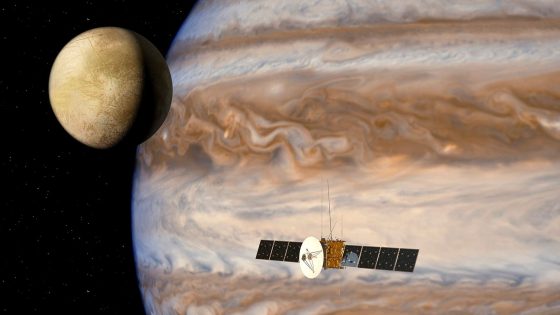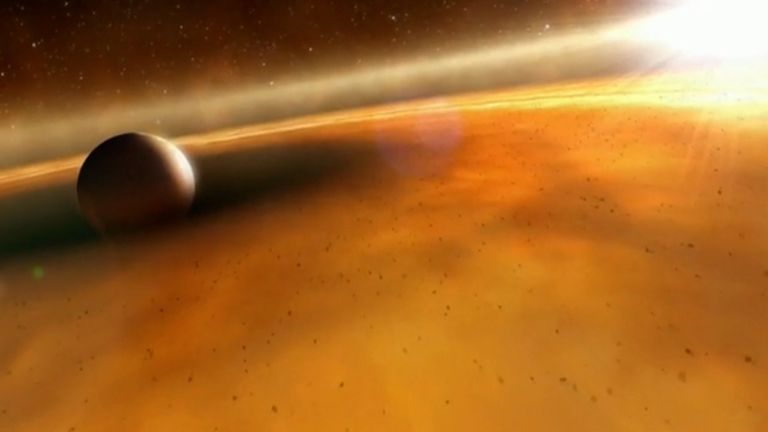The European Space Agency’s Juice craft will return to Earth tonight, taking part in a “world first” fly-by.
Flight controllers will guide the Jupiter Icy Moons Explorer (Juice), with UK-made scientific instruments on board, past the moon and then Earth.
The risky manoeuvre will take Juice on a shortcut to Jupiter via Venus, using the moon’s gravity and then Earth’s, as a natural brake – slowing itself down and then sling-shotting on to the next phase of its journey.
The mission launched in April 2023 on a 4.1 billion-mile journey which will take more than eight years.
Onboard are 10 scientific instruments, which will investigate whether Jupiter’s three moons – Callisto, Europa and Ganymede – can support life in its oceans.
Experts from the European Space Agency (ESA) admit the slightest mistake could take the spacecraft off course and mean the end of the mission.
From around 11.57pm on Monday into the early hours of Tuesday, the agency says a double world first will take place with the lunar-Earth fly-by and the double gravity assist manoeuvre.
The move will change Juice’s speed and direction to alter its course through space.
Earth will bend Juice’s trajectory through space, redirecting it on course for a fly-by of Venus in August 2025.
From then on, energy boosts will begin, with the spacecraft being sped up by Venus and then twice by Earth.
Some keen stargazers may be able to spot Juice pass overhead, with the spacecraft flying directly over South East Asia and the Pacific Ocean.
Powerful binoculars or a telescope will give them the best chance of seeing the spacecraft.
Two cameras on board Juice will be taking photos throughout the lunar-Earth flyby, which will be shared publicly as they are received on Earth.
Read more from Sky News:
Astronauts may be stuck in space until February
UK military spy satellite is launched
Top tips for taking ‘supermoon’ photos
The risky manoeuvres are needed because Jupiter is on average 800 million kilometres from Earth.
Without an enormous rocket, sending Juice straight to the gas giant would require an impossible 60,000kg of onboard propellant.
The UK Space Agency has invested approximately £9m in Juice, which has scientific instruments including various imaging devices, systems for recording the surface of Jupiter’s moons, and sensors to examine their atmospheres.
The UK has helped develop two of those instruments and led the construction of another – the magnetometer (or J-MAG) – which measures magnetic fields.
Dr Caroline Harper, head of space science at the UK Space Agency, described the manoeuvre as “tricky” and requiring “incredibly precise navigation”.
She said: “This is a world first: a double fly-by of the moon and Earth has never been done before… even a tiny mistake could knock Juice off course”.
“This saves a huge amount of fuel, which means that when Juice arrives at its destination, it can do a lot more science.”
Source Agencies




